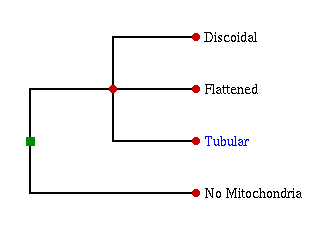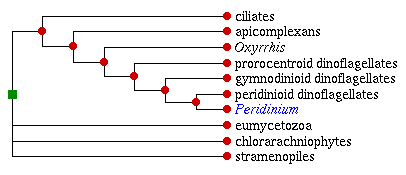
Peridinium is a large genus of small to medium sized dinoflagellates, some but not all of which are photosynthetic. Nonphotosynthetic species are phagotrophic or osmotrophic.
Species occur in freshwater and marine planktonic habitats worldwide. At least a few photosynthetic species may form significant blooms ("red tides"). Some of these blooms are associated with nuisance odors and fish kills, although the most devastating "red tide" dinoflagellates belong to other genera.
Photosynthetic species in the genus Peridinium, and species in closely-related genera that are still treated as species of Peridinium by many workers, are frequently used as experimental organisms in cell biology research, especially in the areas of nuclear structure and function, circadian rhythms, and endosymbiosis.
The unique structural and molecular features of Peridinium and its relatives have prompted much speculation on the evolutionary history of dinoflagellates. Not long ago, this group was believed to be among the most ancient of the extant eukaryotic lineages. Evidence presently suggests, however, that dinoflagellates are a derived group, most closely related to the ciliates and the apicomplexan sporozoans.

Postulated global eukaryote phylogeny based on presence or (ancestral) absence of mitochondria, and shape of mitochondrial cristae. Peridinium belongs to the tubular clade.

Postulated phylogenetic position of Peridinium, inferred from molecular and morphological data. Branch lengths are arbitrary and do not reflect phylogenetic distance.
Return to summary information